Some places feel like they were built for just two people. These escapes weren’t about grand gestures—they were about silence where it mattered, views that didn’t need captions, and meals that lingered long after the last bite. Whether it was a lodge tucked beneath northern lights or a treehouse where the only neighbors were owls, each spot gave us the kind of pause that brings you closer. In these places, time stretched. Conversation came easy. And the world felt far away in the best possible way.
Best Secluded Romantic Getaways:
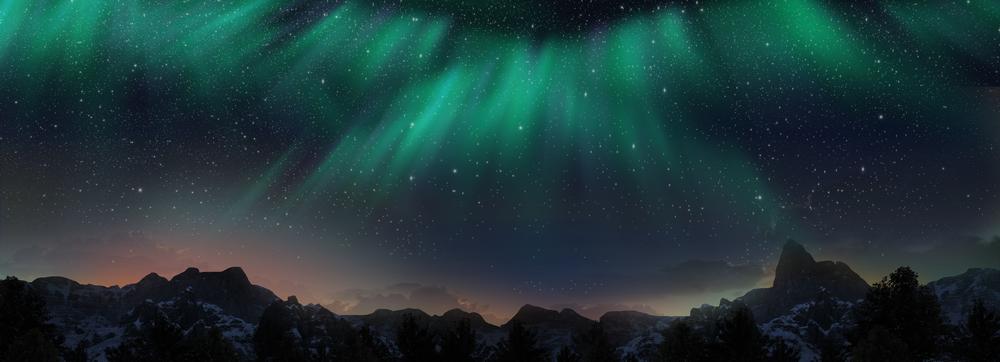
Hotel Ranga, Iceland: Northern Lights & Firelit Calm
“I hope I never forget this sky,” I thought as we stood wrapped in borrowed parkas, watching green ribbons dance above the snow-covered fields. Hotel Rangá sat alone in the Icelandic countryside, far from city lights and exactly where we needed to be. Inside, everything was wood and warmth—log beams, glowing lamps, and sheepskin draped over chairs. Outside, there was nothing but stars, silence, and snow stretching toward the mountains.
What I Loved Most: The way the hot tub steamed against the night air while the northern lights shifted above us. No noise, no phones, just awe and shared breath.
My highlights? Dinner in the lodge-style restaurant: Arctic char with herb butter, golden on the edges, and barley risotto scented with fennel and lemon. The fish was so fresh it barely needed seasoning. For dessert, we shared skyr mousse with wild berry compote—light, tangy, and perfectly cold. It smelled of citrus and cream and tasted like Iceland’s version of comfort.
Plan your romantic stay:
- Location: Hella, South Iceland (about 90 minutes from Reykjavík)
- Vibe: Cozy wilderness, Scandinavian rustic, aurora-lit elegance
- Best Time to Visit: September–April for northern lights; summer for waterfalls and midnight sun
- Cost: ~$400–$700/night depending on room and season
- Extras: Stargazing observatory, outdoor hot tubs, fine dining, in-room massages, nearby glacier tours and hiking
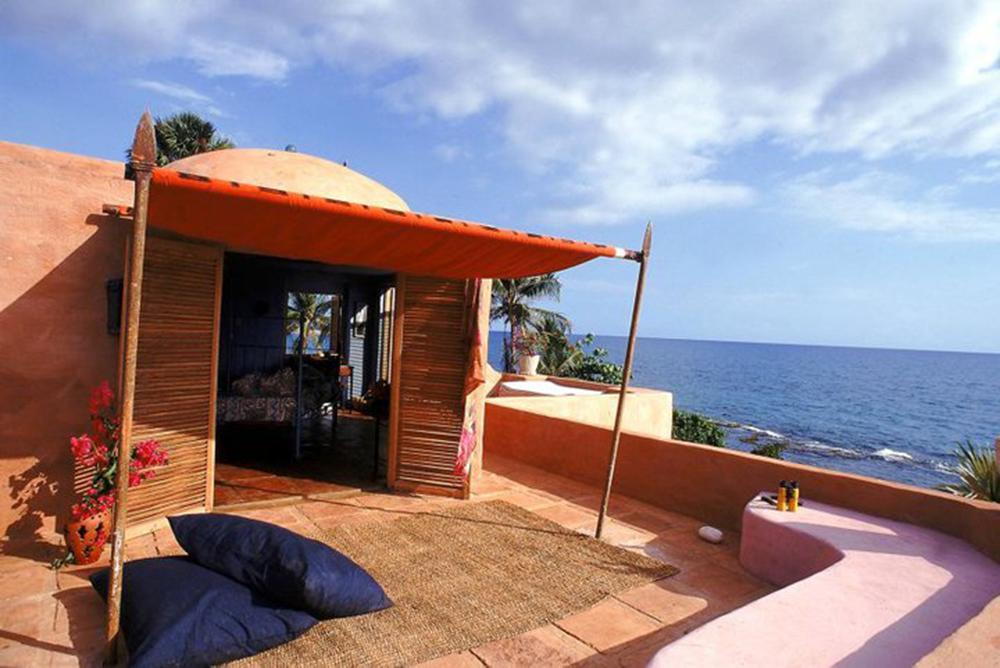
Creative Coastal Love at Jake’s Hotel
Jake's Hotel was color, soul, and freedom—all tucked into a funky slice of Jamaica’s south coast. Our bungalow faced the sea, and the vibe was less resort, more romantic hideaway with personality. I remember thinking, “This is where love can breathe—no dress code, no stress, just us.” The sound of waves, the laughter from the bar, the scent of jerk spices in the air—it all felt alive.
What I Loved Most: Swinging in a hammock with a Red Stripe in hand and not a single plan in sight.
My highlight? Dinner at Jack Sprat: grilled snapper with callaloo, plantains, and fresh mango sorbet. Joyful, laid-back, and delicious.
Plan your trip:
- Location: Treasure Beach, Jamaica
- Vibe: Artsy, authentic, laid-back
- Highlights: Bungalows, community energy, coastal beauty
- Best Time to Visit: November to March
- Cost: Mid-range boutique
- Hours: Reception and dining daily
- Address: Calabash Bay, Treasure Beach, Jamaica
Where Love Meets Island Time
Every destination on this list brings its own flavor of romance—some luxurious, some laid-back, all unforgettable. Whether you're planning a honeymoon, anniversary, or a spontaneous escape for two, the Caribbean sets the scene for connection, quiet, and pure joy. Let the sun kiss your shoulders, the ocean lull you to sleep, and each shared meal remind you how sweet time can be when it’s truly yours.
Related Travel Inspiration
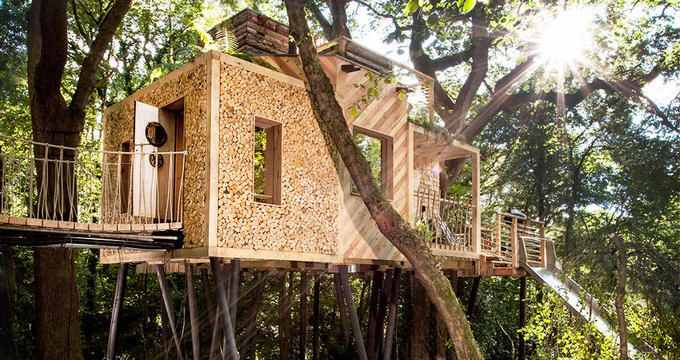
Mallinson in Dorset, UK: Treehouse Quiet & Woodland Whispers
“It feels like we’ve slipped into another world,” I thought as we crossed the rope bridge to our treehouse, the forest hushed beneath us. At Mallinson, in the hills of Dorset, everything felt hand-carved and dreamlike—cedar shingles, outdoor tubs warmed by fire, and paths that disappeared into ferns. No cars. No neighbors. Just birdsong, woodsmoke, and time that wandered as slowly as we did.
What I Loved Most: The wood-fired hot tub in the clearing, where we watched steam rise as owls called through the dusk and the first stars blinked on like old friends.
My highlights? Dinner was brought in a basket: warm sourdough, local cheeses, foraged mushroom soup still hot in its jar. The soup was earthy, rich with thyme and cream, and it smelled like the woods after rain. We curled up with wool blankets, the candlelight flickering as we finished with lemon tart and tea, the forest wrapping around us like a secret.
Plan your romantic stay:
- Location: Holditch, Dorset, England
- Vibe: Enchanted, quiet luxury, barefoot elegance in the trees
- Best Time to Visit: Spring through early fall for mild weather and greenery; winter for cozy solitude
- Cost: ~£250–£400/night depending on treehouse or cabin
- Extras: Outdoor tubs, woodland walks, gourmet hampers, optional private chef, total off-grid privacy
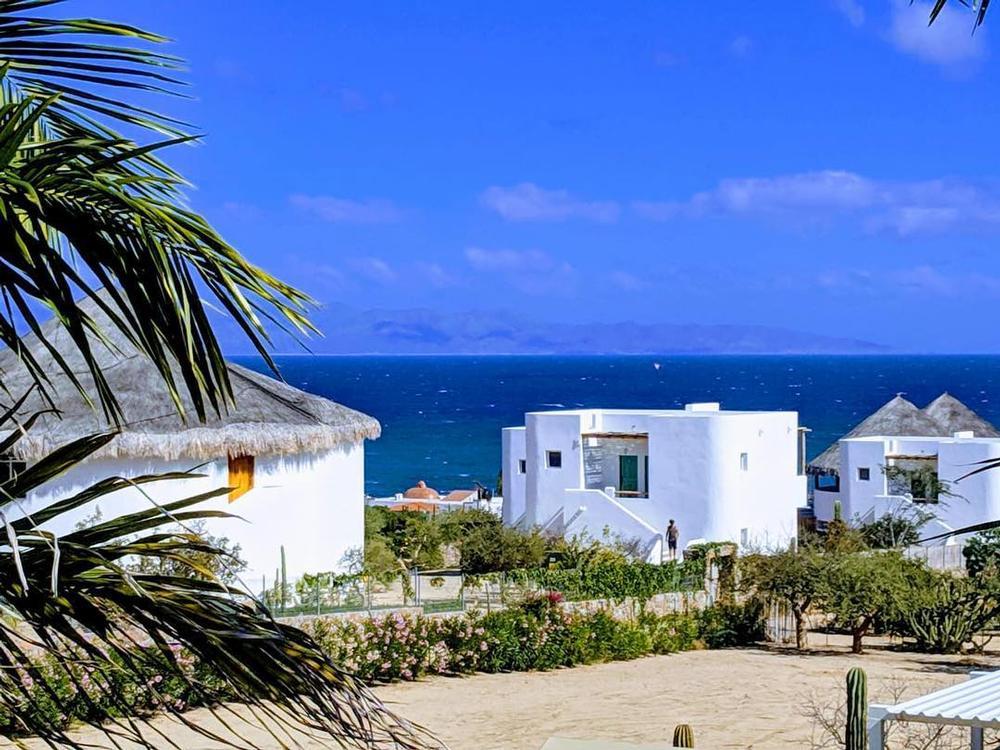
Desert Calm and Ocean Light at Casa Tara Retreat
“Everything here moves like water,” I thought, lying in a hammock as the sun slipped behind the desert hills. Casa Tara sat quietly above the Sea of Cortez, its white walls and palm-lined paths humming with calm. The days stretched long—yoga in the open-air shala, walks along the shell-dotted beach, shared silence between bites of fresh mango. It felt like the kind of place where healing happened without fanfare—just by being there together.
What I Loved Most: The sound of the wind in the palms as we floated side by side in the saltwater pool, the desert blooming faintly in the distance.
My highlights? Dinner at the on-site restaurant, Templo: grilled octopus with smoked paprika aioli, served over sweet potato purée. The octopus was tender with a charred edge, the aioli bright and peppery. We finished with coconut panna cotta that smelled of vanilla and lime, the texture smooth and light as air. We lingered long after the plates were cleared, sea breeze in our hair and not a single reason to rush.
Plan your romantic stay:
- Location: La Ventana, Baja California Sur, Mexico
- Vibe: Tranquil, healing, desert-coastal retreat
- Best Time to Visit: November–April for cooler days and kite-surfing season
- Cost: ~$250–$500/night depending on suite
- Extras: Yoga, massage therapy, organic meals, beach walks, paddleboarding, spa

Hotel Gotthard in Lech, Austria: Alpine Charm & Slow Afternoons
“This feels like the kind of town where nothing rushes,” I thought as we wandered through Lech, snow crunching under our boots and the air holding the quiet like a promise. Hotel Gotthard sat at the edge of the village—family-run, warm without being grand, and welcoming in a way that felt deeply personal. Our room had thick quilts, mountain views, and windows that opened to silence broken only by church bells and winter wind.
What I Loved Most: The scent of fresh bread drifting upstairs from their in-house bakery each morning, and the way we lingered over breakfast just because we could.
My highlights? Dinner at the hotel’s Stube was candlelit and comforting: veal schnitzel with lingonberry jam, roasted potatoes crisp and herby, and a creamy mushroom soup that smelled of nutmeg and thyme. The warmth in that room wasn’t just from the fire—it was from the way people treated one another, gently and with time.
Plan your romantic stay:
- Location: Lech am Arlberg, Austria
- Vibe: Classic alpine, elegant yet down-to-earth
- Best Time to Visit: Winter for skiing and snow walks; summer for wildflowers and quiet trails
- Cost: ~€250–€500/night depending on season and suite
- Extras: On-site bakery, spa, ski access, hiking trails, cozy dining with local cuisine
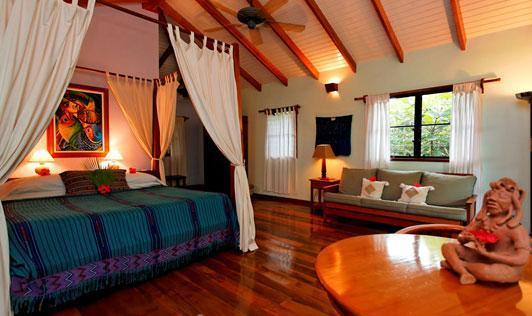
Hamanasi Adventure & Dive Resort: Rainforest Canopy Meets Caribbean Calm
“I stood on the dock and felt the sea and jungle breathe together.” At Hamanasi, the rainforest and sandy beach shared the same horizon. I stepped out beneath palms and ferns onto a soft shore, with the jungle rising just behind—a green heart of Belize on the edge of turquoise calm.
What I Loved Most: Mornings spent snorkeling the Belize Barrier Reef—schools of fish danced through coral gardens just offshore. The water smelled faintly briny, and I felt how the reef pulsed with life beneath the surface.
My highlights? I stayed in a deluxe treehouse perched among foliage—its veranda opened to birdsong and breeze. At lunch, I tasted local specialties in the open-air restaurant: fresh ceviche with zesty lime and coconut rice heavy with aroma from garden herbs. Every bite was warm, vibrant, and tied to place.
Plan your stay:
- Drive Time from Belize City: ~2 hours to Hopkins Village
- Vibe: Eco-luxury, adventurous, peaceful
- Highlights: Barrier Reef snorkeling/diving, jungle hikes, cave tubing, Mayan ruins tours, organic garden dining
- Best Time to Visit: February to May—dry skies and warm, clear seas
- Cost: Rooms from ~$300/night; day excursions often included in packages
- Amenities: Beachfront suites and treehouse rooms, pool, kayak/paddleboard rental, spa services, on-site restaurant sourcing herbs from its organic garden, complimentary breakfast, front-desk concierge
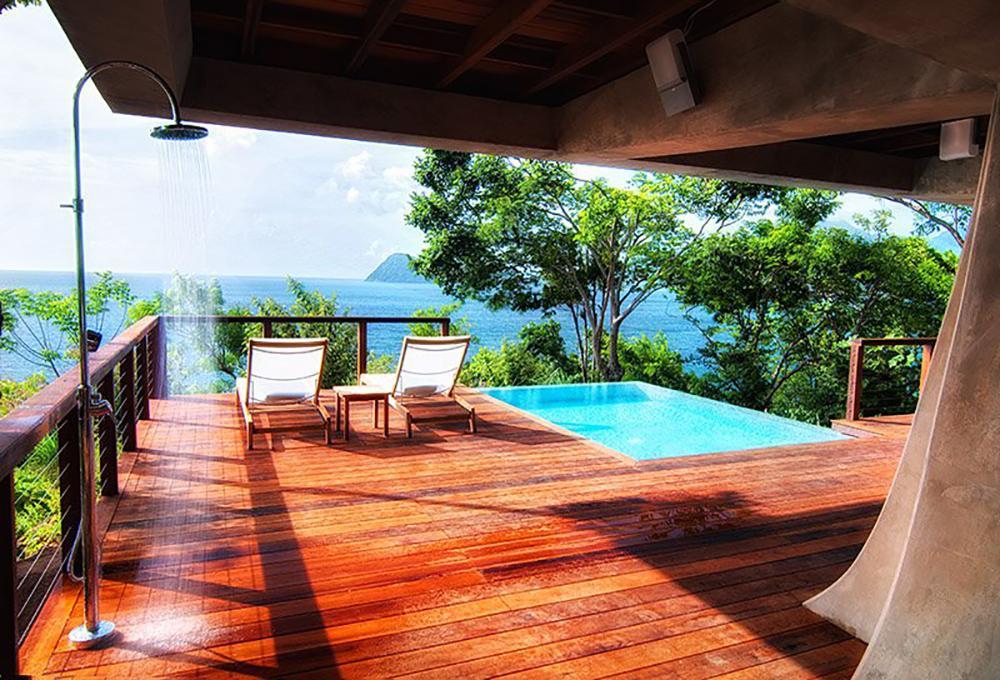
Secret Bay: Rainforest Seclusion & Ocean Light
“This feels like a place meant for whispered vows,” I thought as we opened the villa doors and the sea breeze swept through. Tucked into a lush cliffside in Dominica, Secret Bay offered treehouse-style villas with private pools, open-air showers, and views that made everything else fall away. Green met blue in every direction, and time moved at the pace of waves against rocks.
What I Loved Most: Floating in our plunge pool as the sun set over the bay, the scent of lime trees drifting in on the breeze and not a single sound but the sea.
My highlights? Dinner came to us: grilled snapper in a ginger-lime glaze, sautéed plantains, and coconut rice warm and fragrant. The snapper flaked beneath the fork, tender and citrus-bright, while dessert—a passionfruit tart—balanced tart and sweet so perfectly we didn’t speak until the last bite was gone.
Plan your romantic stay:
- Location: Portsmouth, Dominica
- Vibe: Jungle-luxury, barefoot elegance, eco-serene
- Best Time to Visit: December to April for dry season and cooler evenings
- Cost: ~$1,000–$1,800/night depending on villa and season
- Extras: Private chefs, yoga decks, cliffside plunge pools, hiking access, kayaking, in-villa spa services
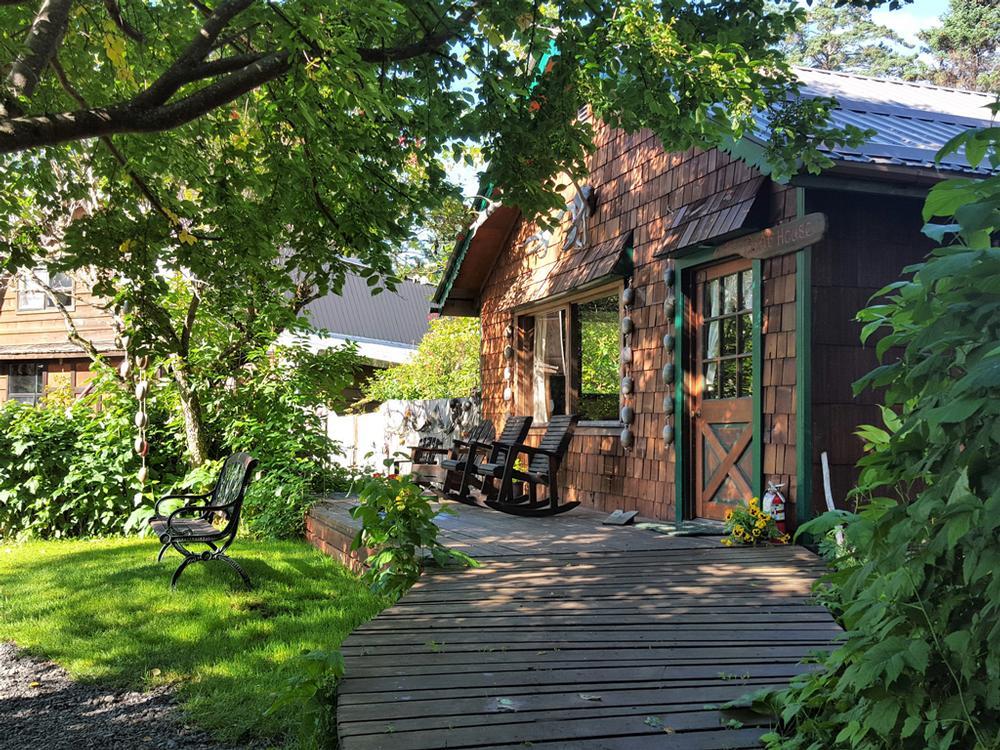
Kachemak Bay Wilderness Lodge
The first moment felt like a whisper of something wild. A short boat ride across Kachemak Bay delivers you to China Poot Bay—and suddenly, civilization feels miles away. The lodge’s cabins perch on stilts over the water, framed by spruce trees and mountains in the distance. Inside, the scent of wood smoke and evening sea air greeted me like a friend. “This is where the rhythm of the place sets the pace,” I remember thinking, stepping into the main lodge with its roaring stone fireplace and wood-paneled walls.
The lodge hosts just five cozy cabins—meaning around 10 to 14 guests at a time—with 10 to 12 local staff ensuring personalized attention. It’s all-inclusive in the best sense: fenced in by nature, not by policies. Days begin with guided hikes or kayak trips to tide pools, where you might find sea stars, octopus, and seals moving just below the surface. Afternoons are for birding (harlequins, eagles, otters glide through), or lounging in the Nordic sauna before settling by the hot tub as dusk softens the shoreline.
Meals are nightly highlights—a melody of wild salmon, local greens from their garden, and wild berry desserts made by chef. The dining room windows look straight out onto the bay, turning every plate into a moment paused. I remember looking up mid-bite to watch whales spout across the water. That was the kind of magic this place gives without even trying.
Evening brought a hush that felt like reading a single line over and over again because it sounded true: seals calling across the water, the cabin lights glowing, and the mountains watching patiently. I closed my journal, took a breath, and let the stillness fill me.
Kachemak Bay Wilderness Lodge At a Glance
- Vibe: Remote, intimate, nature-first elegance
- Highlights: Private cabins over China Poot Bay, guided hikes and kayaking, gourmet meals featuring fresh seafood, outdoor hot tub, sauna, tide-pooling
- Best Time to Visit: Late spring through early fall for tide pools, wildlife, and warm evenings
- Cost: All-inclusive pricing covers cabin, meals, guided excursions, and meals; transportation from Homer typically included
- Address: China Poot Bay, across Kachemak Bay from Homer, AK (boat or seaplane access)
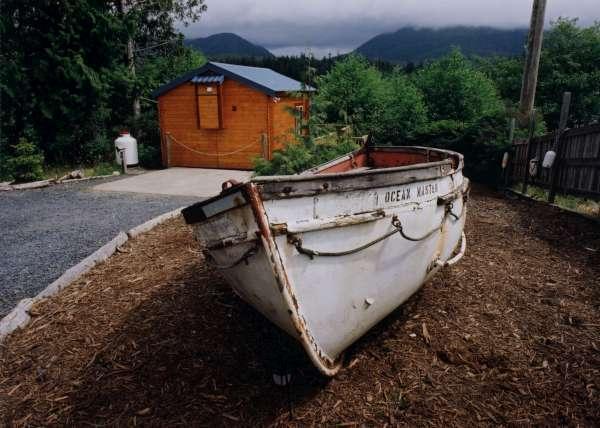
Woodland Romance at Anchors Inn
Tucked into the trees in Ucluelet, Anchors Inn felt like our own little cabin world—part forest, part sea, completely us. The suite had rustic charm, a private deck, and just enough of the Pacific’s wild energy to make every moment feel special. I remember thinking, “This is where you come when you want to disappear together—in the best way.” Even rainy days were magical here.
What I Loved Most: Watching the rain hit the bay while wrapped in a blanket with my coffee in hand and no agenda at all.
My highlight? Fresh local seafood from nearby Heartwood Kitchen—buttery halibut with roasted root veggies, and a slice of honey pie that we shared under soft string lights.
Plan your trip:
- Location: Ucluelet, Vancouver Island, BC
- Vibe: Rustic, quiet, nature-filled
- Highlights: Harbor views, forest walks, nearby beaches
- Best Time to Visit: March–October
- Cost: Budget-friendly cabins
- Hours: Self-check-in options available
- Address: 250 Salmon Beach Rd, Ucluelet, BC V0R 3A0, Canada
Where Love Finds Its Quiet
Every place we stayed gave us something small that stayed with us—a silence that felt like trust, a meal that turned into a memory, a night sky that made everything else fall away. These weren’t grand honeymoons or sweeping adventures. They were something gentler. They were where we turned inward, toward each other, and let the world spin a little slower. Mountains, forests, deserts, and distant shores—they each reminded us that the best kind of romance is often the one found in stillness, in showing up, and in watching the sun rise—together—somewhere new.
Jump to a Spot...
- • Hotel Ranga, Iceland: Northern Lights & Firelit Calm
- • Creative Coastal Love at Jake’s Hotel
- • Mallinson in Dorset, UK: Treehouse Quiet & Woodland Whispers
- • Desert Calm and Ocean Light at Casa Tara Retreat
- • Hotel Gotthard in Lech, Austria: Alpine Charm & Slow Afternoons
- • Hamanasi Adventure & Dive Resort: Rainforest Canopy Meets Caribbean Calm
- • Secret Bay: Rainforest Seclusion & Ocean Light
- • Kachemak Bay Wilderness Lodge
- • Woodland Romance at Anchors Inn


